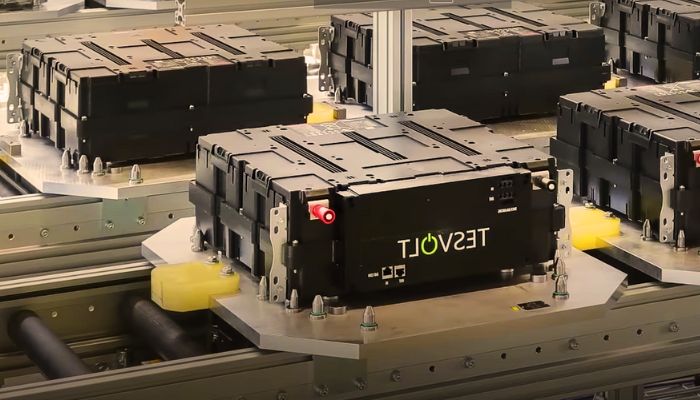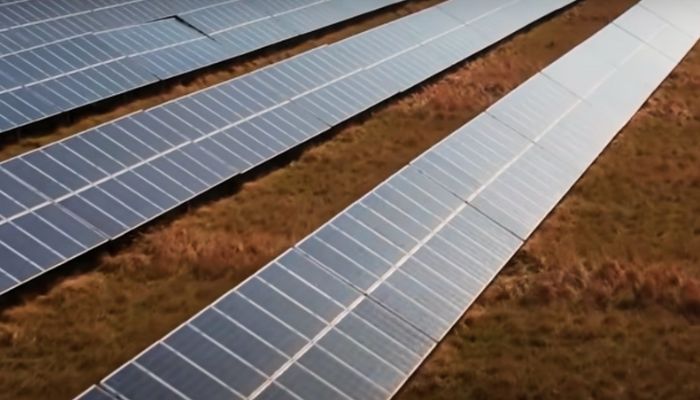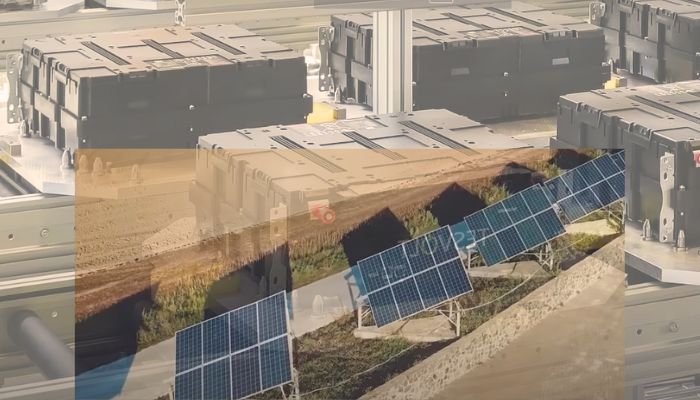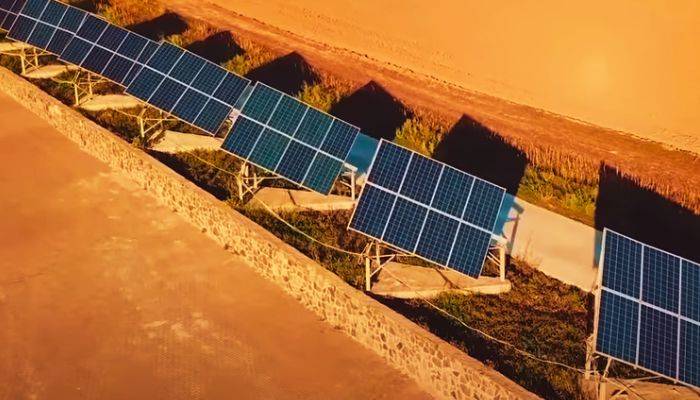Solar energy – We explain what solar energy is and how it is produced. Also, what is it for, and what are its advantages and disadvantages?
What is solar energy?
Solar energy is the energy generated by the Sun. This energy, emitted in the form of electromagnetic radiation, constitutes the main source of light and heat on Earth. Thanks to technology, it is currently possible to take advantage of it to obtain electrical and thermal energy, intended to supply homes and industries. It is a constant, economical, non-polluting and safe source of energy.
The Sun constantly emits enormous amounts of energy. A portion of it impacts the Earth. Approximately 30% of this energy is reflected back into space; The remaining 70% is absorbed by the atmosphere, oceans and continents.
The solar energy that reaches the Earth’s surface is composed mostly of visible light and infrared radiation and, to a lesser extent, ultraviolet radiation and other forms of radiation.
How is solar energy produced?

Solar energy has its origin in the interior of the Sun. There, fusion reactions constantly occur between the nuclei of hydrogen atoms, resulting in the formation of helium atoms.
Nuclear fusion that occurs in the Sun generates enormous amounts of heat and energy. These are radiated into space as waves and particles, and some reach the planets. On Earth, solar energy heats its surface and, based on temperature differences between regions, causes winds and determines the climate. Furthermore, it is used by plants, which transform it into chemical energy in the process of photosynthesis.
Must Read:- Volcano, Legend, Ecosystem
What is solar energy for?
Solar energy holds many practical possibilities in today’s world. Its main uses are related to the generation of electricity and the obtaining of thermal energy. These are some of the applications of solar energy:
- Supply of hot water and heating in homes.
- Cooling, through heat absorption systems driven by the thermal energy of water heated with a solar collector.
- Generation of electricity in thermal power plants, from water vapor from solar collectors.
- Operation of autonomous electrical devices, from calculators and watches to motors and satellites, using photovoltaic cells.
- Industrial production of chemical, textile and food products, among others, from the heat accumulated in solar ponds, salt water tanks specially designed for this purpose.
- Smelting of metals and production of hydrogen fuels, from the thermal energy accumulated in solar ovens, enormous solar collectors that concentrate sunlight and release the heat accumulated in fluids at high temperatures.
- Sterilization, pasteurization and, in general, application of methods to eliminate microorganisms through the action of heat.
- Obtaining salt from seawater, and, in parallel, purification of salt water.
- Cooking food, using solar cookers.
- Hydrogen production, through artificial leaves, which, imitating the photosynthesis process of plants, separate oxygen and hydrogen from water.
How is solar energy used?

There are various technologies to capture solar energy and convert it into energy usable in human activities. Some do it actively and others passively.
Active technologies
They are those that use electrical or mechanical devices (photovoltaic cells, thermal concentration technologies) to capture and store solar energy, and transform it into another type of energy (electric or thermal).
Passive technologies
It includes provisions related to bioclimatic architecture, that is, the orientation of buildings to receive more natural light, prevent the dispersion of heat added by the Sun, etc.
Types of solar energy technologies

There are two main types of technologies that capture energy from solar radiation and transform it into another type of energy.
- Photovoltaic cells. Also known as photoelectric cells or solar cells. They are devices that transform the energy of solar radiation into electrical energy. Each photovoltaic cell is made of a semiconductor material, usually silicon. The semiconductor absorbs sunlight and emits electrons. These, when captured in an electric field, generate an electric current. Solar panels, installed on roofs, terraces or large areas of free land, are made up of lots of photovoltaic cells.
- Thermal collectors. Also called solar collectors or solar thermal collectors. These systems collect thermal energy from solar radiation and redistribute it for practical purposes, such as heating, hot water provision, and even electricity generation. The collectors are made up of lenses, mirrors or dark metal plates, which concentrate or absorb sunlight. The radiation thus concentrated or absorbed heats a fluid (water or air) that circulates in tubes or tanks and which can be used directly, or transferred and stored in another medium.
Advantages of solar energy

Among the advantages of solar energy we can mention:
Availability
Unlike fossil fuels, the Sun is a virtually inexhaustible source of energy and is not at risk of being overexploited, as is the case with other renewable resources (such as biomass).
Low ecological impact
Solar energy does not pollute nor does it require complicated raw material extraction processes that harm the environment. Compared to other energy sources, solar energy equipment has a low environmental impact, limited to that generated during its manufacturing.
Saving
It is a cheap energy model, since the Sun radiates for free to the entire world. Although the installation of the necessary devices requires an initial expense, the investment is recovered in the medium term.
Accessibility
The relative ease of installation and the autonomy capacity of solar energy devices allow farms and rural settlements, far from the electrical grid, to access electricity.
Security
Solar energy does not present the health risks derived from other types of energy, such as atomic energy or fossil fuels.
Disadvantages of solar energy
Despite its great benefits, solar energy also has certain disadvantages, like any energy source. Some are the following:
Variability
Solar energy is neither uniform nor constant: factors such as weather, time of day, and time of year affect the amount of solar energy available. There are also places where solar radiation is low, so its use is not a viable option.
Negative impact on the environment
Although solar energy in itself is not polluting, the manufacturing of energy equipment generates gases that increase the greenhouse effect, in addition to producing other toxic substances.
Initial cost
Although obtaining energy is very economical, the installation costs of a solar plant are still quite high, given the amount of technology required.
Site
Large surfaces are needed to obtain high solar energy yields, and in many cases this is difficult to achieve. Desert areas usually receive a lot of sun and have large plains available, but at the same time they are very far from any human settlement. Must Read:- Erica Cerra Net Worth
The future of solar energy
In recent years, there have been great advances in the use of solar energy. The cost of equipment has been drastically reduced, to the point that in some regions with abundant sunlight, solar energy is the most economical energy source. In addition, the available technologies were improved in order to make them more efficient.
More and more countries are investing in this type of technology to reduce dependence on fossil fuels (oil, coal or gas) as a source of energy.
It is expected that in the coming years the equipment will become even cheaper and more efficient. Among the actions aimed at this purpose are:
- Research to design solar energy systems that are capable of generating 1.5 times more energy than current systems.
- The study of alternative and less expensive materials than silver and silicon.
- The creation of bifacial solar panels, which can capture sunlight from both sides.
| Home Page | Malhath TV |
